Search Images
Browse Content (p. 1599)
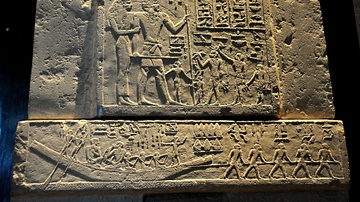
Image
False-Door Stela of Meni
Limestone fragments of the false-door stela of the tomb of Meni. From Giza, modern-day Egypt. Old Kingdom, 6th Dynasty, circa 2200 BCE. (State Museum of Egyptian Art, Munich, Germany).
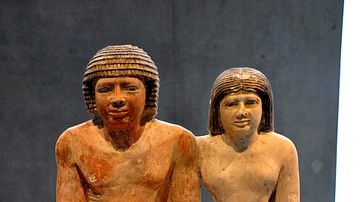
Image
Sabu's Family Group Statue
In this limestone statue, Sabu and his wife Meritites appear seated. The wife holds her husband at the lower chest. Only the lower legs of their son Iseb appear between their legs. From modern-day Egypt. Old Kingdom, 5th Dynasty, circa 2400...
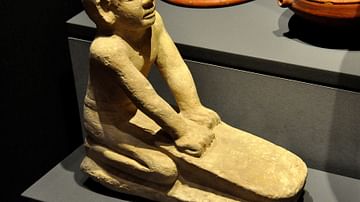
Image
Statue of an Ancient Egyptian Servant
Limestone statue of an Egyptian servant grinding flour. From modern-day Egypt. Old Kingdom, 6th Dynasty, 2250 BCE. (State Museum of Egyptian Art, Munich, Germany).
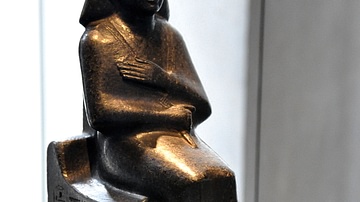
Image
Statue of Iahmes
Grabbo seated figure of Iahmes, chief of the granaries of the god Amun. From El-Kab, modern-day Egypt. New Kingdom, 18th Dynasty, 1480 BCE. (State Museum of Egyptian Art, Munich, Germany).
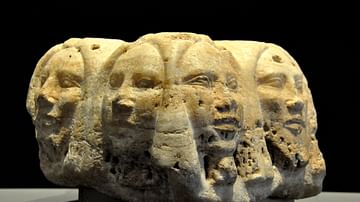
Image
Proto-Historical Statue from Egypt
Base of a calcite royal statue. It depicts four heads of foreigners. From modern-day Egypt. Proto-historical period, 2nd Dynasty, circa 2700 BCE. (State Museum of Egyptian Art, Munich, Germany).
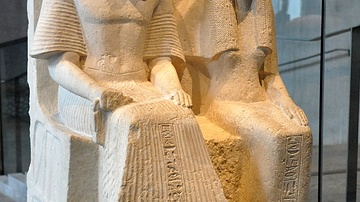
Image
Statue of Sibe and His Wife
Limestone seated figures of Sibe and his wife. From modern-day Egypt. New Kingdom, 19th Dynasty, circa 1220 BCE. (State Museum of Egyptian Art, Munich, Germany).
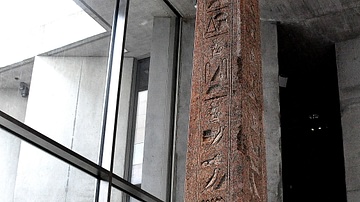
Image
Obelisk of Titus Sextius Africanus
This rose granite obelisk was found in Rome. Roman period, circa 50 CE. (State Museum of Egyptian Art, Munich, Germany).
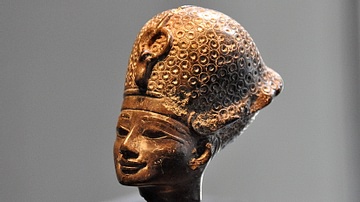
Image
Head of Thutmose IV
Steatite (soapstone) head of the Egyptian pharaoh Thutmose IV. He wears a blue crown. From modern-day Egypt. New Kingdom, 18th Dynasty, 1380 BCE. (State Museum of Egyptian Art, Munich, Germany).

Image
Coffins of Herit-ubekhet
Two sycamore wood coffins of Herit-ubekhet, a temple musician at Karnak. From Deir El-Bahari, Western Thebes, modern-day Egypt. 3rd intermediate period, 21st Dynasty, circa 1000 BCE. (State Museum of Egyptian Art, Munich, Germany).

Image
Statue of Amenemhat III
In this ophicalcite statue, only the upper half of a seated figure of the Egyptian pharaoh Amenemhat III has survived. Probably from Faiyum, modern-day Egypt. Middle Kingdom, 12 Dynasty, circa 1800 BCE. (State Museum of Egyptian Art, Munich...